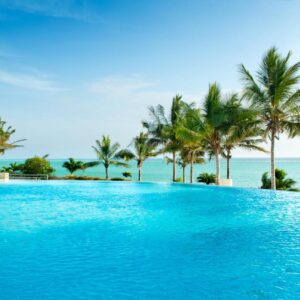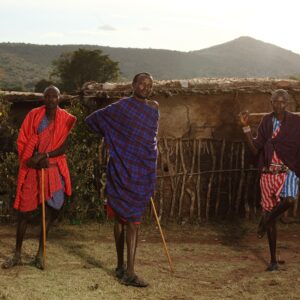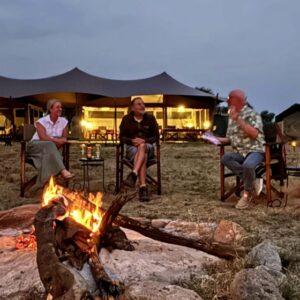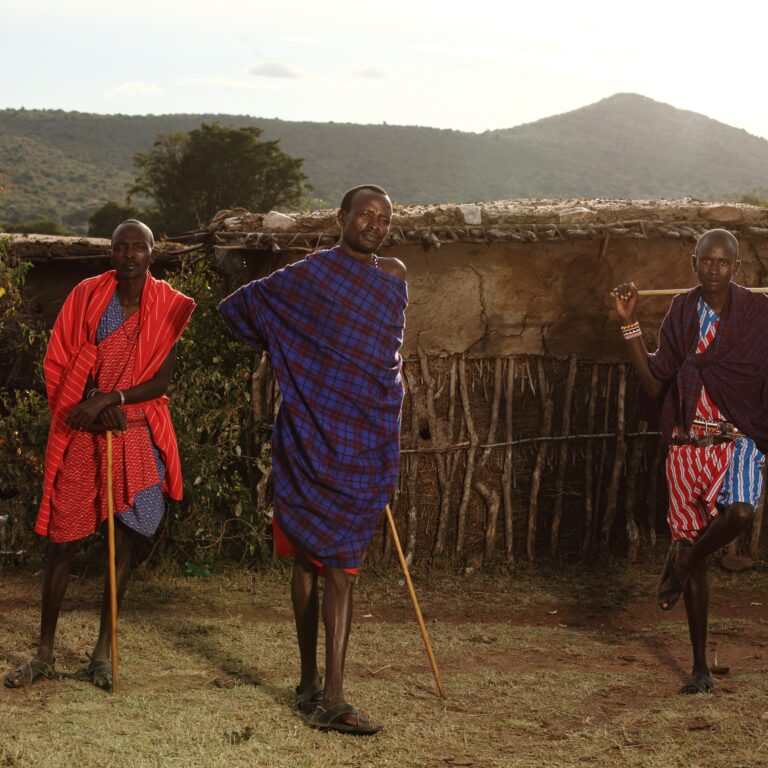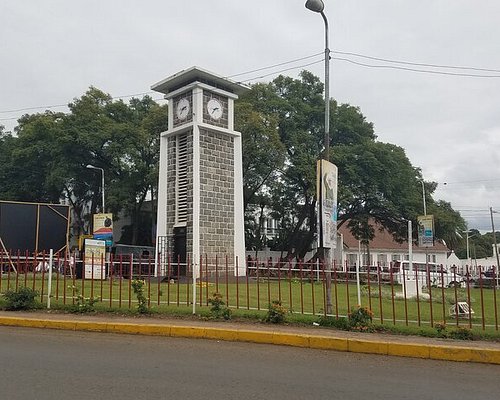The first snowfall of the season usually arrives at the end of November or the beginning of December. The snow tends to thicken between February and April, and then starts to recede. As you can see in the graphic above, November and then April, and May are rainy seasons on Kilimanjaro. Analysis when does Kilimanjaro wear its snowy Crown? Unveiling the Secrets of its Summit. Towering over the Tanzanian plains, Kilimanjaro, the “Roof of Africa,” isn’t just a majestic peak; it’s a weather chameleon. While its base basks in tropical sunshine, its summit often dons a dazzling crown of snow. But when exactly does this icy transformation occur? Intrigued climbers and curious minds, gather round! Inquire about your Kilimanjaro hiking Tours now with us and save up to 15% off special offers, deals online.
A magically white Uhuru Peak
Uhuru Peak, bathed in a magical white glow, stands as the ethereal crown of Mount Kilimanjaro. In October, this majestic summit captivates with its pristine, snow-covered expanse, creating a surreal scene against the clear, azure sky. The sparkling, white terrain of Uhuru Peak, at 19,341 feet, invokes a sense of awe and wonder, as if touched by the hand of magic. A beacon of triumph for climbers, the peak’s enchanting whiteness symbolizes the achievement of reaching Africa’s highest point, where the earthly challenges blend seamlessly with the otherworldly beauty of this iconic summit.
Snowfall Mount Kilimanjaro Symphony:
The Snows of Kilimanjaro, a short story by Ernest Hemingway, was first published in Esquire magazine in 1936 and later collected in The Fifth Column and the First Forty-nine Stories (1938). The stream-of-consciousness narrative relates the feelings of Harry, a novelist dying of gangrene poisoning while on an African safari. Snow on Kilimanjaro: The first snowfall of the season usually arrives at the end of November or the beginning of December. The snow tends to thicken between February and April, and then starts to recede. As you can see in the graphic above, November and then April, and May are rainy seasons on Kilimanjaro. Kilimanjaro’s snowy season plays out like a symphony in three acts:
✔Act I: The Arrival (December-February): As the year transitions into the dry season, the trade winds shift, ushering in cooler temperatures and the first flurries of snow around the summit. When is there snow on the summit of Kilimanjaro? By February, the peak usually boasts a respectable blanket of white.
✔Act II: The Peak Performance (March-April): With the long rainy season approaching, snowfall intensifies, reaching its peak between March and April. This is when Kilimanjaro truly earns its snowy reputation, attracting climbers seeking a winter wonderland experience.
✔Act III: The Retreat (May-November): As the rains arrive, the snow starts to recede, gradually melting away until it disappears completely by November. However, even during this “snowless” period, remnants might linger in the higher regions.
Beyond the Kilimanjaro Script:
Remember, nature loves improvisation. While this timeline offers a general guide, Kilimanjaro’s weather can be unpredictable. When is there snow on the summit of Kilimanjaro? Snowfall patterns can vary year to year, influenced by factors like global climate change and short bursts of unpredictable rain.
Seeking Snowy on Mount Kilimanjaro Summits:
✔So, when is the best time to witness Kilimanjaro’s snowy glory? For guaranteed snow, aim for February-April, the peak snowfall months. Be prepared for colder temperatures and potentially harsher conditions.
✔For balance: Consider December-January. You’ll likely encounter snow, but with milder temperatures and fewer crowds compared to peak season.
✔For unique views: September-October offers a rare glimpse of the summit cleared of old snow, yet potentially dusted with the first flakes of the new season.
Remember: Regardless of the season, respect the mountain’s unpredictable nature. Always be prepared for diverse weather conditions, prioritize safety, and consult experienced guides for personalized advice.
Bonus Fact: Sadly, due to climate change, Kilimanjaro’s glaciers are receding at an alarming rate. Witnessing its snowy peak might become a rarer sight in the future. So, cherish the opportunity to climb under its icy crown while you can!
Is there snow at the top of Kilimanjaro?
Yes, one of the Seven Summits in the world. Wondrously, the peak of this gorgeous mountain is snow-capped. This means the summit is at very low temperatures, making it possible for snow and glaciers to exist. Snows give some superb and brilliant scenes to visitors who have made it to the top of the highest peak.
What is the best month to go to Mount Kilimanjaro?
The best time to climb Kilimanjaro is during its dry season, which spans from December to mid-March and late June to October. The most favorable months are January, February, July, August, September, and October. These months are when the weather conditions are at their best. Your best chance of experiencing a snowy summit is to climb Kilimanjaro between December and April. February probably offers you the most significant guarantee of a white peak.
When was the last time it snowed on Kilimanjaro?
These images show the famous “snows of Kilimanjaro” in 1976, 2000, 2010, 2013, and 2019. Mount Kilimanjaro, almost 20,000 feet above sea level, is the highest peak in Africa.
What is the coldest month to climb Kilimanjaro?
The Mount Kilimanjaro Temperature changes as you climb higher and as the seasons change. The summit zone is in an “Arctic” climate, meaning it’s below freezing all year round. The coldest months are usually December to March and June, after the rainy season. During these times, you’re likely to see snow at the summit.
What is the weather like at the top of Kilimanjaro?
The temperature at Uhuru Peak, the summit of Kilimanjaro, is always below freezing. It can even drop to -27°C (-17°F) at night! And that’s not counting the wind chill.
Is there permanent snow on Kilimanjaro?
Mount Kilimanjaro, at 19,341 feet (5,895 meters) tall, is one of these mountains that hosts a permanent snow cap at its summit. The high altitude and arctic zone conditions create an environment where snow can persist throughout the year.
What is disappearing from the top of Mount Kilimanjaro?
The mountain possesses a large ice cap and the largest glaciers in Africa, including Credner Glacier, Furtwängler Glacier, and the Rebmann Glacier. This ice cap is rapidly shrinking, with over 80% lost in the 20th century. The cap is projected to disappear entirely by the mid-21st century.
How cold is summit Night Kilimanjaro?
At the summit, Uhuru Point, the night time temperatures can range between 20 and -20 degrees Fahrenheit (-7 to -29 degrees Celsius). Due to Mount Kilimanjaro’s great height, the mountain creates it’s own weather.
Why is there always snow on top of Mt Kilimanjaro?
The snow on Kilimanjaro is formed by a unique process called “the exhaust,” where warm, moist air rises from the lower slopes and cools as it reaches higher altitudes. This cool air then condenses and freezes, creating the iconic snow on the mountain’s summit.
What is the wettest month on Kilimanjaro?
What is the Weather on Mount Kilimanjaro? As shown, January and February are the warmest months, April and May are the wettest months, June and July are the coolest months, and August and September are the driest months.
Weather Overview on Mount Kilimanjaro. …
Kilimanjaro’s Five Ecological Zones.
✔What sleeping bag for Kilimanjaro?
✔What is the survival rate of Kilimanjaro?
✔Is Kilimanjaro the only place with snow in Africa?
✔What animal is the snows of Kilimanjaro?
✔Are the snows of Kilimanjaro gone?
✔What is the cause of death on Kilimanjaro?
✔What is the ranking of Kilimanjaro in the world?
✔How hard is the Kilimanjaro summit Day?
✔Why not climb Kilimanjaro?
✔Do you need oxygen at the top of Mount Kilimanjaro?
✔Is there snow at the top of Kilimanjaro?
✔What is unusual about Mount Kilimanjaro?
✔Is there an ice cap on Mount Kilimanjaro?
✔What is the best month to climb Kilimanjaro?
✔Can you shower while climbing Kilimanjaro?
✔What months does it snow on Kilimanjaro?
✔Which Kilimanjaro route has the highest success rate?
✔How cold is it up Kilimanjaro?
✔Is Kilimanjaro the only place with snow in Africa?
✔Is there any glacier left on Kilimanjaro?

